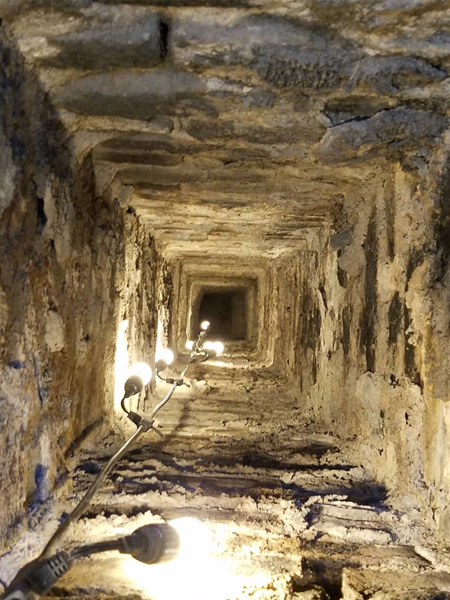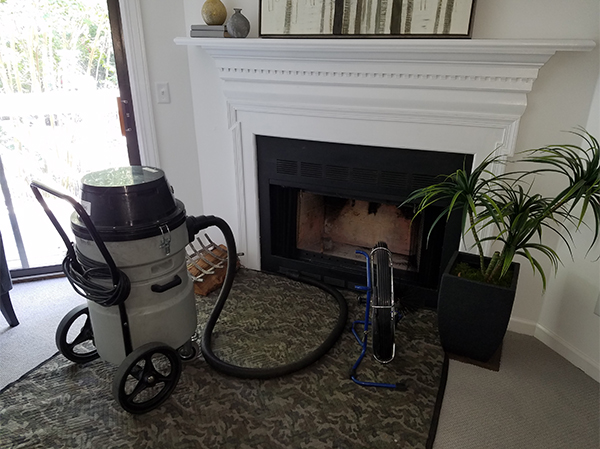
Every sweep begins with a Level 2 inspection to determine if your chimney needs to be cleaned or not. If no build up has occurred, no sweeping is necessary. An inspection also includes an assessment of your chimney’s structural integrity, the soundness of the bricks and mortar, and whether there are any draft and flow issues.
We spend time with you, going over any questions or concerns you may have about how your fireplace is burning and explaining the findings of our inspection.
If an inspection extends past the process above and involves a more hands-on valuation of your chimney’s health. If any aspect of your chimney system raises cause for a deeper inspection, we’ll investigate further by running cameras. The photos and videos will show you the inside and outside of your chimney and any areas of concern that we've found.
A Level 3 inspection is more invasive still and requires a bid before we go behind your walls to assess deeper structural problems and get to their root cause. Image and video footage is included for Level 3 inspections to get a full view of what’s happening and what repairs need to be made.
The amount and type of buildup in your chimney will let us know what method of sweeping we need to do. For heavily creosoted chimneys, we clear the room, lay down tarps, and vacuum out as much as possible before then brushing the remaining soot from the crevices. Chimneys with less buildup will not require as much time. Regardless of how much cleaning is needed, we leave your home as clean as it was before we came.

Creosote is the residue that builds up on the inner walls of your chimney as a result of the by-products of combustion (smoke) combining with cooler air in the chimney and causing condensation. It is black or brown in appearance and can be crusty and flaky; tar-like, drippy, and sticky; or shiny and hardened.
Creosote can become combustible if it catches fire inside your chimney (called a ‘chimney fire’). This can damage your chimney and could spread to your home.
Following the sweep we will test your chimney for any draft and flow issues. A clean chimney that does not have proper draft and flow, is not functional or safe. We make sure to remove any obstruction leading to poor draft and flow and also offer reconstruction if your fireplace box was not built with the proper dimensions to ensure it will burn cleanly and effectively.
The upward movement of air and smoke through a chimney to the outside of your house
The rate (speed) at which the air and smoke moves up and out of the chimney
How often should I have my chimney inspected or cleaned?
A lot depends on your fireplace use, but it’s recommended getting your chimney inspected annually to make sure any issues are spotted before they become bigger problems and any build up is removed before starting fires in the colder months.
For commercial clients, inspections and cleanings may need to happen more frequently. Run a restaurant with a pizza oven or coffee roasting machine? We'd be happy to have you as a client too.